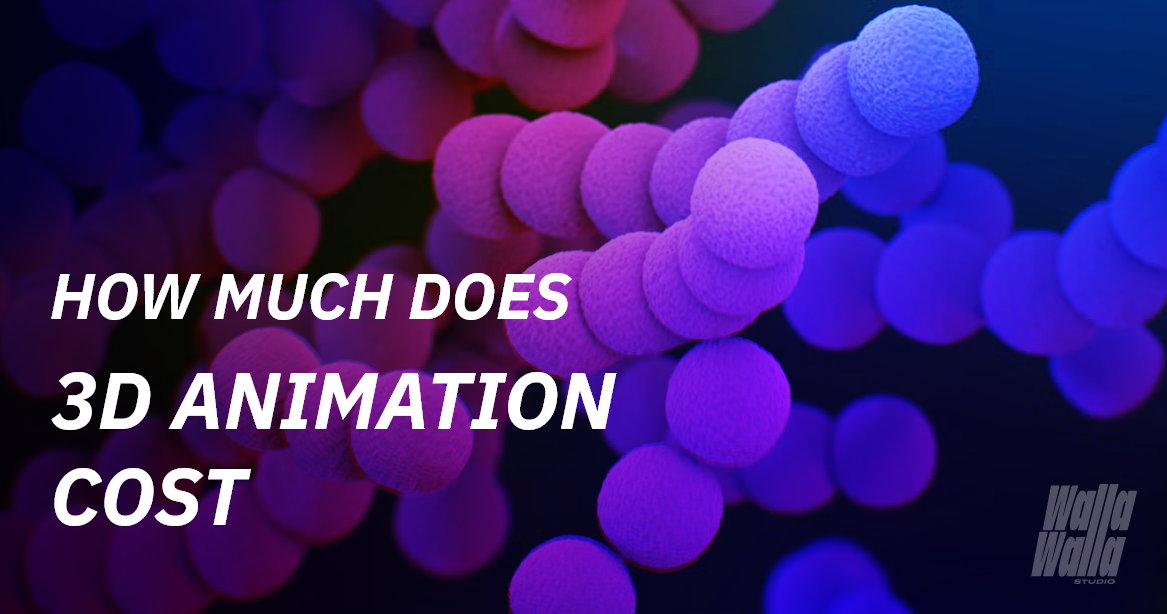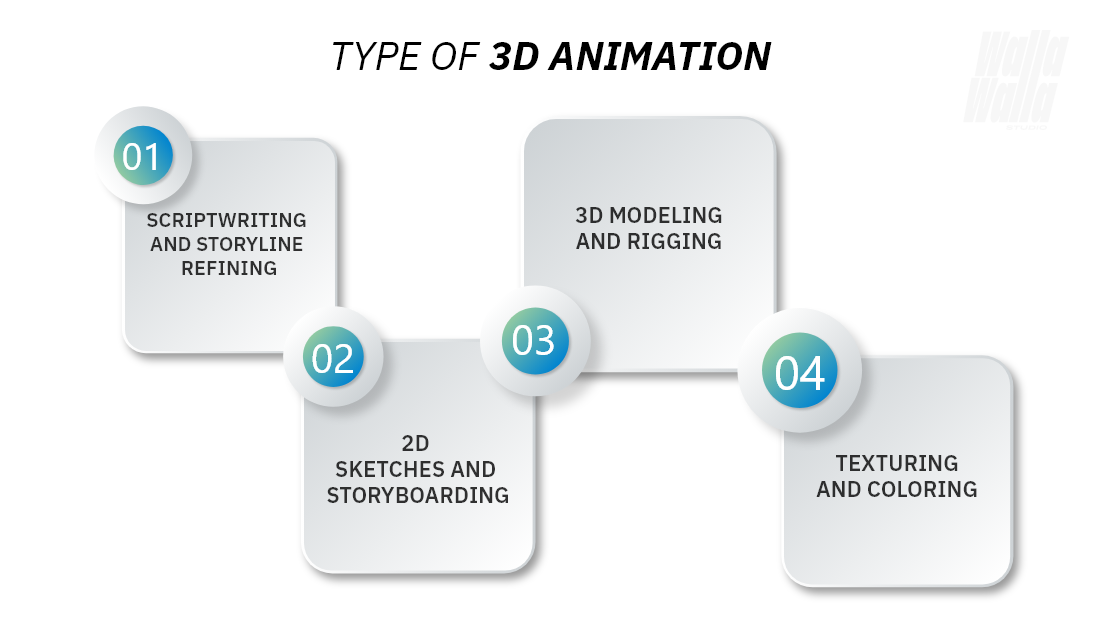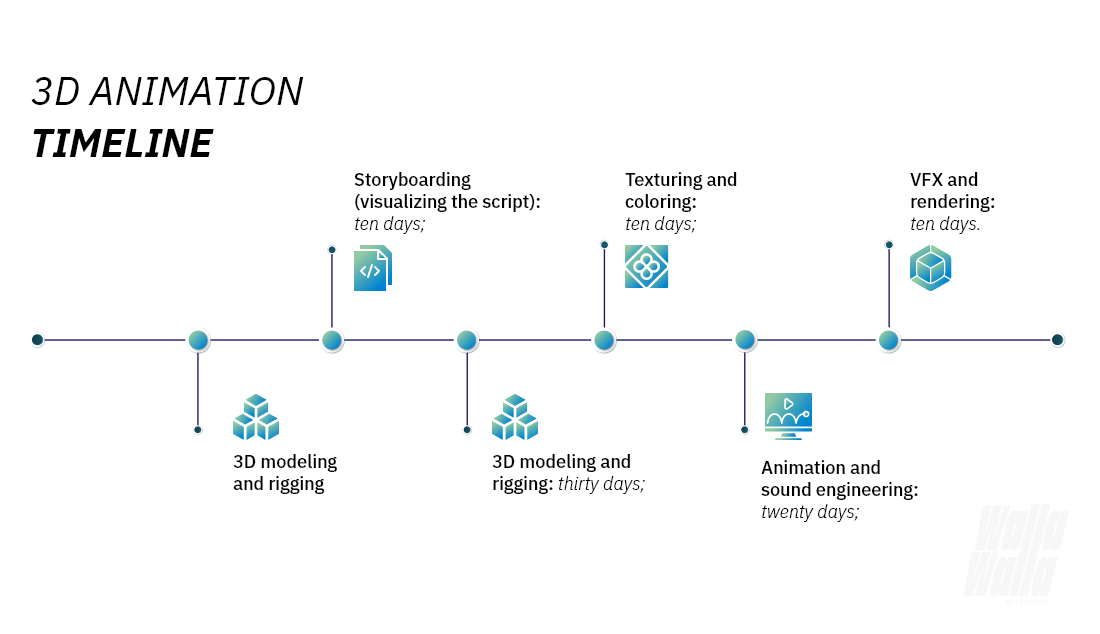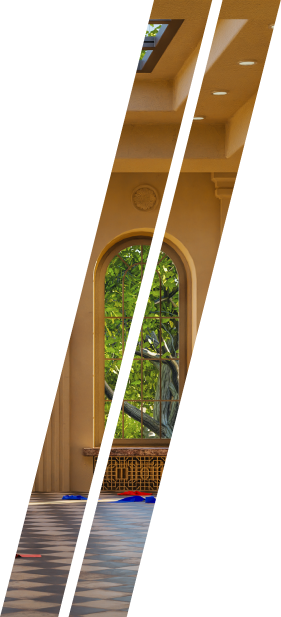 Search
Search

Although every corner of cyberspace is full of dynamic computer graphics, the users of modern gadgets have a vague idea of 3D animation cost. The same can be said about the vast army of entrepreneurs who rightfully consider 3D animation a perfect vehicle for marketing promotion. Unlikely most 3D cartoon viewers know how much 3D animation costs, except it is expensive. Why is it so? Do people overestimate the capabilities of 3D software that seemingly allows 3D animated videos to appear easily from nowhere? Are there specific factors that get us shocked with 3D animation costs sometimes?
A sort of illiteracy in the actual pricing of 3D animation is forgivable for a broad public: creating animated videos remains a pretty special activity of 3D design studios. It is time to unveil the secret behind the production of 3D animated videos and the expenditures animators have to spend. How much does 3D animation cost? Read and find the answer in our present article.

Key Factors Influencing 3D Animation Cost
Most people take for granted that 3D animation is expensive. This is partially true, however. Besides, the “expensive” definition is too broad to reveal any exact figure. The production costs of different 3D animated videos may significantly vary. A lot depends on several factors affecting the 3D animation cost directly. Some of them are apparent, while others are not. And the first and logically explainable one is the type of a 3D video.
Type of 3D animation
The cost of 3D animation per minute can start from $3000 for a simple explainer video and reach dozens of thousands for a Hollywood-made 3D cartoon. The type of three-dimensional graphics determines the cost of its production. This is the ground upon which all other price-determining factors are based. However, the type never tells you how much exactly a particular 3D video can cost. Just the order of numbers becomes more or less clear. It is hardly worth expecting the cost of a 3D animated video created by Pixar to be lower than $15 000 per minute, for instance.
The type alone hints at the scope of work to be done, the work’s complexity, and the number of specialists to be engaged. This info says almost nothing to the people beyond the animation industry, but 3D professionals can recognize which 3D animation costs every given type of video implies. The type is more general and less informative than the second apparent factor of the price of 3D videos – the duration.
3D animation duration
It seems nothing can be more evident than the correlation between the duration of a 3D animated video and its cost: the longer, the more expensive. But it’s not that simple. A 1-minute video can be almost as expensive as a 2-minute one of the same type and similar complexity. The clue lies in the scope of preparational undertakings. A studio should perform a lot before producing the first minute of a 3D animated video from scratch. The second minute of 3D animation costs much less since the first minute has already absorbed many cost-intensive factors. What factors do we mean? They are the so-called pre-production stages:

Scriptwriting and storyline refining
Every 3D animated video begins with an idea. There should be a script conceptualizing the idea. Ideas live in mind and are ephemeral, while scripts imply well-written narratives reflecting the story unequivocally grasped by every animator. Writing a script is often a time-consuming process with numerous iterations. It requires hours and hours of mental effort and creativity from scriptwriters. All subsequent 3D video production stages can go in vain unless a script and a storyline are perfectly refined. The scriptwriting iterations cost money, and those 3D animation costs are translated into the first minute of an animated video.
2D sketches and storyboarding
It is theoretically possible but rare when a 3D animated video is produced without 2D sketches. Powerful imagination is inherent not in everyone. Hence, preliminary visuals are needed to show how the story unfolds on the screen. Hand-drawn 2D storyboarding helps animators and their customers come to a consensus regarding many (if not all) features and works. It helps get more precise pricing, by the way. But the cost of sketching lies within the first minute of the video.
3D modeling and rigging
3D modelers create three-dimensional models of characters, props, and objects according to the entire plot. They do a lot of creative work before animators, programmers, sound engineers, and VFX specialists get to the process. They make statue-like 3D models move with the so-called rigging process. Their job is to create what should fill the video, while animators are in charge of how that “what” should act and play subsequently. 3D modelers deliver in-video objects for the entire film in advance. And their part of 3D animation costs appears before the first minute of the video is released.
Texturing and coloring
Artists and 3D designers create textures and skins for the objects and characters delivered by modelers. They give almost a final look to all in-video objects (the completely finished appearances will come after VFXs are applied). In addition to coloring and texturing, light and shadow should appear on every 3D surface to let it look life-like naturally. This job adds another portion of 3D animation costs to the first minute of the film.
Undoubtedly, the duration is a price-determining factor. Still, the cost of the first minute can hardly suggest the price of the entire timeline in many cases. This is especially relevant when the 3D animation cost per minute is considered without regard to the technical complexity of video production.
3D animation complexity
The complexity is multifaceted when it comes to 3D animation cost. It begins from the very topic to be used as the plot’s idea. The more unfamiliar the topic for animators, the longer the time they have to spend searching the subject and understanding how to turn it into 3D visuals. Any given topic implies a certain degree of detail. The more details, the higher the price of a 3D animated video.
Besides detailing, sophisticated textures, life-like simulations, and various realistic effects can significantly increase the expenses for 3D video production. A 3-minute product guide with no characters is way cheaper than a 30-second gameplay teaser for an AAA-class RPG like Cyberpunk 2077. In a broad sense, complexity can be accepted as the most significant cost-determining factor for three-dimensional video graphics.
The number and qualifications of animators
The complexity of 3D animation mentioned above determines the number and qualification of animators to be involved in film production. There is a direct dependence in it: the tougher the challenge, the larger the number of 3D animation experts and the higher the qualification they should possess. Increasing the number of experts automatically adds 3D animation costs to any project.
Suppose a particular task requires ten working hours to be completed. But ten hours spent by five persons cost less than the same ten hours spent by fifteen ones. Besides, the price of 3D graphics depends on hourly rates, which, in turn, depend on the skills of the engaged specialists. There are many factors determining hourly rates, actually. They are various and not always comprehensible. Location is one of the factors that indirectly hints at the expert’s qualification: a 3D designer from Hollywood is expensive by definition. But more on than later
3D Animation Timeline: How Long Does It Take to Create?
No one-fits-all production timeline can be applied to any 3D animation project. Each is highly individual and can be calculated concerning the above-mentioned factors. At the same time, an exemplary algorithm can be demonstrated to give an idea of the scope of work necessary to produce a 3D animated video.

Let’s consider a high-quality one-minute promotional 3D animation created for marketing purposes. The production stages can require the following periods, on average:
- Scriptwriting and storyline refining: five days;
- Storyboarding (visualizing the script): ten days;
- 3D modeling and rigging: thirty days;
- Texturing and coloring: ten days;
- Animation and sound engineering: twenty days;
- VFX and rendering: ten days.
In total, the entire process can take eighty days or six hundred and forty working hours (8-hour working day). Taking into account 40-hour working weeks, the period can last about 16 calendar weeks or four months. The given timeline implies no urgency in production. However, it can be decreased upon request when animators work on weekends.
Determining Factors Hor Hourly Rates of 3D Animators
There are two basic options for 3D animators to hire: freelancers and studios. Freelancers are cheaper since they have much lower operating expenditures (taxes, hardware/software, office facilities, etc.). At the same time, freelancers are weaker in terms of control and responsibilities. Besides, any group work done by different freelancers requires extra organizational efforts from the customer, even in the present era of digital connectivity.
3D animation studios can offer a full-cycle service, in contrast. They have well-organized creative teams of professionals covering all accomplishments necessary to produce a 3D animated video from A to Z. They do not bother customers with organizational issues having hands-on experience in workflow optimization. Studios merely know who should do what and how much time each task requires. Such knowledge leads to shorter production periods with a higher quality of 3D animation that, in turn, compensates for higher hourly rates and provides attractive 3D animation costs. Several determining factors for hourly rates are equally applicable to freelancers and studios.

Location
Both freelancers and studios offer different hourly rates depending on their physical locations. Modern economics allows many companies to provide outsourcing services for lower rates across a particular business sector. A 3D animated video produced by American experts costs more than a film of similar quality created by professionals from Eastern Europe.
Experience/qualification
Another determining factor for hourly rates is the animator’s qualification. Juniors with experience of fewer than two years are twice cheaper than mid-levels (2-5 years), who, in turn, are cheaper than seniors (5+ years). Besides, a scriptwriter and a 3D modeler have different hourly rates since their jobs bring different values to a project.
Quotation approach
Such factors as location and experience are equally applicable to both freelancers and studios. But what critically distinguishes freelancers from studios is the very approach to the calculation of 3D animation cost. Calculating the price of a 3D animated video produced by a combined team of freelancers can become a tough challenge for customers: too many variables should be considered. Studios, in contrast, deliver precise quotations for 3D animation costs per minute in which all included rates and fees are clear and transparent.
Clues For Successful 3D Animation Services
Producing 3D animation is always collaborative when various specialists do their fair share. As with any other teamwork, creating a 3D animated video can go well under several specific conditions:
- All team members work face to face in the same environment. Any problem can be solved immediately in collaboration. It reduces the overall project timeline and, consequently, 3D animation cost.
- A creative team comprises people who have spent years together accomplishing challenging tasks. Each of them knows who is worth what and responsible for. Neither shallow expectations nor groundless claims can emerge within the team. All roles and routines are well-recognized, and a smooth workflow is the norm.
- All team members are aware of the sequence of steps in 3D animation production. Besides, they know which processes may go in parallel: 3d modeling of characters can start before script refining is finished, for instance.
- Nobody delays in fulfilling the assigned task since anyone is not distracted by irrelevant activities. In other words, high working efficiency is achieved since all specialists are focused on their specific jobs. Therefore, no extra 3D animation cost can appear due to poor operating management.
- Communication experts professionally connect the production team with the customer. They understand all nuances of the 3D animation pipeline allowing all team members to work uninterruptedly. They inform customers about everything the latter should know and may ask, from billing to the production progress.
- The team realizes which part of video production can and should be outsourced with regard to a particular project to achieve the best results with the lowest possible price of a 3D video.
- The team’s professional reputation is too crucial not to ignore advanced risk management protecting 3D animation costs from being affected. A win-win strategy helps the team mitigate risks and hold a firm position in the sector.
Practice suggests that the conditions mentioned above are hardly achievable by a combined team of freelancers, however skilled each can be. Only dedicated design studios can arrange video production to imply reasonable pricing. In addition to the high quality of a final film, no hidden expenses and organizational mess are inherent in their production pipelines.
Hence, the best option to get precise information about your 3D animation project costs is to contact a professional 3D design studio with your idea. You won’t have to break your head over complicated cost calculations with the hourly rates of various animators with different skills from different locations. You will get a comprehensive price proposal created individually for you. Moreover, 3D animation studios are usually flexible in adjusting your budget to any project complexity with no loss of quality.
Get a clear vision of 3D animation costs from those whose primary business is producing animated videos. Walla Walla Studio is always at your disposal in this regard.
FAQ
1. How much should a 3D animation cost?
It should cost as much as animators decide it to be. Thus, the question is finding 3D animation experts who can issue precise calculations for your animation project. No hypothetical one-fits-all pricing for an average 3D video exists: every 3D animation is a custom-made product. And if so, you can get an individually calculated quotation after a studio (or a group of freelancers) grasps a general idea of your project.
2. How much does a 30-second 3D animation cost?
It depends on numerous cost-determining factors, such as the animation type, its complexity, the number of animators needed, their qualification, applicable hourly rates, and the location of the studio (or freelancers). The simplest explanatory 30-second video can cost $1500 if no creative work on the plot and characters is needed. At the same time, a 30-second teaser for an AAA-class video game can be an order of magnitude more expensive.
3. Why does 3D animation cost so much?
3D animation production is a sophisticated process requiring such valuable traits as creativity from animators and particular and rare technical skills. Besides, any 3D animation production pipeline implies a tight collaboration of numerous specialists. Hence, proactive teamwork management is necessary. In addition, 3D animation is an art form combined with modern computer graphics technologies. Such a combination can hardly occur without a deep mutual understanding between artists and 3D modelers. A cumulative effect of all mentioned aspects makes 3D animation costs relatively high compared to other types of visuals.


